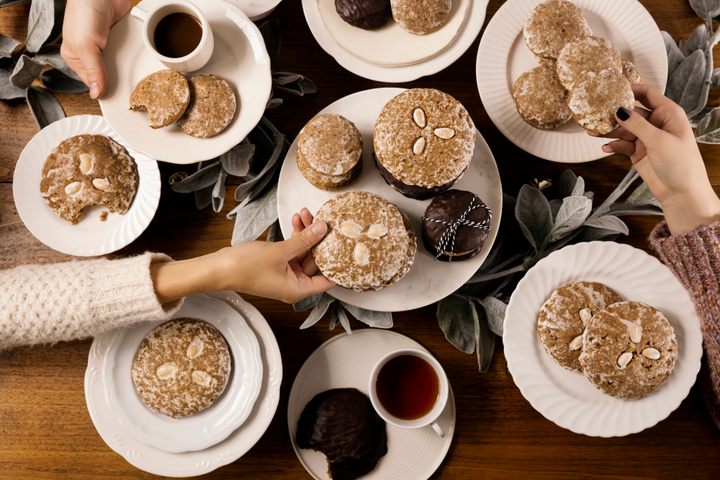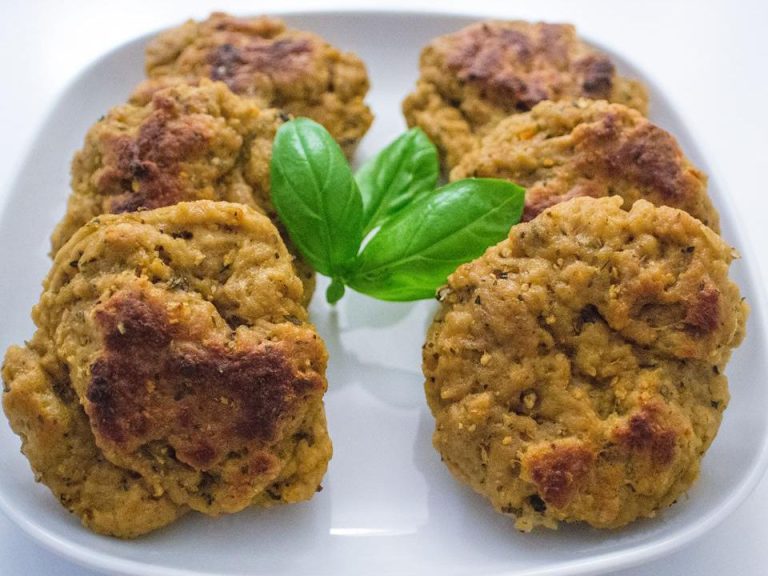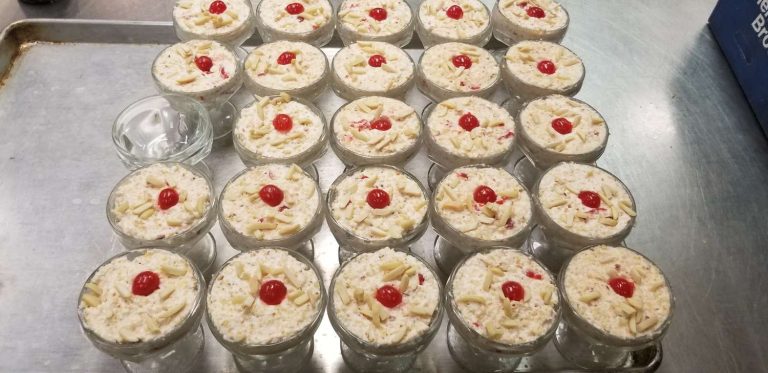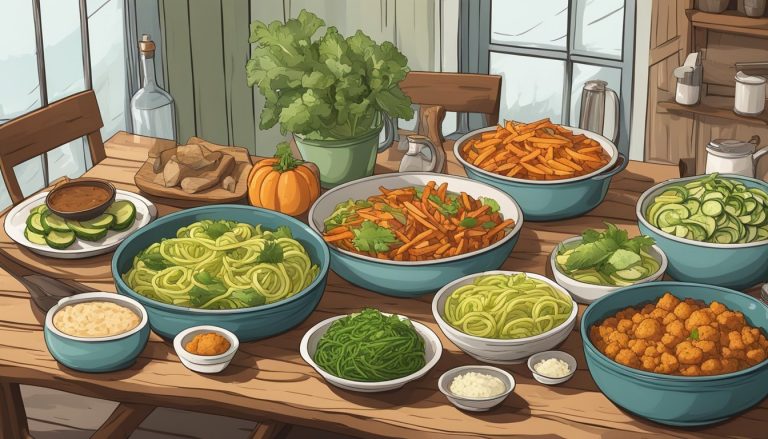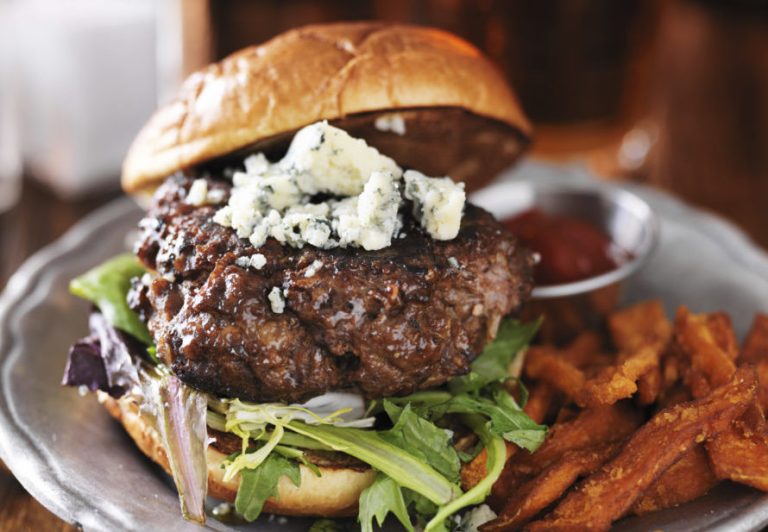Old German Honey Cookies: Recipes, History & Health Benefits
Old German honey cookies, often called “Honigkuchen,” trace their roots to medieval German baking traditions. During the Middle Ages, honey served as a primary sweetener due to the scarcity of sugar. Bakers combined honey with various spices brought from the East, like cinnamon and cloves, to enhance the flavor. These cookies became central to festive celebrations and were often enjoyed during Christmas. Historical references to honey cookies appear in various German cookbooks dating back to the 16th century, reflecting their long-standing cultural significance.
Regional Variations Across Germany
Though Honigkuchen shares common ingredients, regional variations exist across Germany. In Nuremberg, bakers are known for their renowned Lebkuchen, which includes nuts and dried fruit. Aachen’s Aachener Printen features a firmer texture and uniquely incorporates sugar beet syrup. Saxony’s Pulsnitzer Pfefferkuchen stands out with its peppery spice blend and unique shapes. These regional differences contribute to the rich tapestry of German holiday traditions, with each area proudly showcasing its distinct take on the beloved honey cookie.
Key Ingredients and Preparation
Highlighting Honey: The Star Ingredient
Honey, the key ingredient, offers both sweetness and moisture. Traditional recipes use local honey varieties, each adding unique flavor notes. When converting measurements, remember that honey’s density can vary. For a richer taste, dark honey types like buckwheat are preferable.
Additional Ingredients That Define the Flavor
Additional ingredients shape Old German honey cookies’ distinct taste. Spices like cinnamon, cloves, and nutmeg provide warmth, while butter ensures a smooth texture. Ground almonds or hazelnuts often add a subtle crunch. Some recipes incorporate lemon or orange zest for a citrusy tang.
Salt is essential for balance, enhancing both sweetness and spice. Baking soda acts as a leavening agent, keeping the cookies light. For extra depth, optional ingredients include a splash of rum or German-style spices, such as anise or cardamom.
Step-by-Step Baking Guide
Preparing the Dough
Start by gathering all your ingredients. You’ll need ⅔ cup of local honey, ⅔ cup of brown sugar, 6 tablespoons of unsalted butter, 1 large egg, 2¾ cups of all-purpose flour, 1 teaspoon of baking soda, 1 teaspoon of ground cinnamon, ½ teaspoon of ground cloves, ½ teaspoon of ground nutmeg, ¼ teaspoon of salt, 1 tablespoon of lemon zest, and ½ cup of finely chopped nuts (optional).
In a small saucepan, heat the honey, brown sugar, and butter over low heat until the sugar dissolves and the mixture is smooth. Let it cool to lukewarm. In a large bowl, whisk the egg, then slowly add the cooled honey mixture while stirring continuously.
In another bowl, combine the flour, baking soda, cinnamon, cloves, nutmeg, and salt. Gradually add the dry ingredients to the wet mixture until a soft dough forms. Add the lemon zest and nuts, if using, and mix well. Cover the dough with plastic wrap and refrigerate it for at least two hours for the flavors to meld and the dough to firm up.
Baking Tips for Perfect Cookies
Preheat your oven to 350°F (175°C). Line baking sheets with parchment paper to prevent sticking. Roll out the chilled dough on a lightly floured surface to about ¼ inch thickness. Use cookie cutters to shape the dough into desired forms and place them on the prepared baking sheets, spacing them about 1 inch apart.
Bake for 10-12 minutes or until the edges start to brown slightly. Avoid overbaking, as the cookies will harden as they cool. Let the cookies cool on the baking sheets for 5 minutes, then transfer them to a wire rack to cool completely. For added flair, you can drizzle icing or sprinkle powdered sugar once the cookies are completely cooled.
By following these steps, you’ll create delectable Old German honey cookies that are perfect for any festive occasion.
Health Benefits of Honey in Baking
Nutritional Components of Honey
Honey, a natural sweetener, contains essential nutrients beneficial for your health. It’s rich in antioxidants, including phenolic compounds and flavonoids. These antioxidants combat oxidative stress in the body. Honey also has antibacterial properties due to its hydrogen peroxide content. Further, it offers a mix of vitamins and minerals, such as vitamin C, calcium, and potassium, vital for bodily functions. The natural sugars in honey, primarily fructose and glucose, provide a quick energy source, making it a healthier choice for baking.
Advantages of Using Honey Over Sugar
Using honey instead of sugar in baking offers several benefits. Honey retains more moisture, enhancing the texture and shelf life of your baked goods. It also has a lower glycemic index compared to sugar, leading to a slower rise in blood sugar levels. Honey imparts a unique flavor profile, adding depth and richness to your Old German honey cookies. Moreover, because of its antimicrobial properties, honey can help inhibit the growth of bacteria and mold in baked goods. Replacing sugar with honey can lead to softer, more flavorful cookies, contributing to both their taste and longevity.
Serving and Storage Tips
Best Ways to Serve Old German Honey Cookies
Serve Old German honey cookies during festive occasions, especially Christmas, to highlight their traditional roots. Arrange the cookies on a decorative platter for an appealing presentation. Pair them with warm beverages like mulled wine, hot chocolate, or tea to complement their rich flavors. Offer them as part of a dessert buffet or as a special treat during holiday gatherings. Include a variety of cookies, such as Lebkuchen and Aachener Printen, to provide options for different tastes.
Preserving Freshness: Storage Practices
Store Old German honey cookies in an airtight container to maintain their moisture and flavor. Keep the container in a cool, dry place to prevent the cookies from becoming stale. For longer storage, consider freezing the cookies. Place them in a single layer on a baking sheet, freeze until solid, then transfer to a freezer-safe container. Thaw at room temperature before serving. Add a slice of apple or a piece of bread to the container if the cookies become hard; it helps retain softness by absorbing excess moisture.
Conclusion
Old German honey cookies offer a delightful blend of history, tradition, and flavor. These cookies, with their rich ingredients and unique taste, bring a piece of medieval Germany right to your table. Whether you’re enjoying Lebkuchen, Aachener Printen, or Pulsnitzer Pfefferkuchen, each bite is a testament to the artistry of German baking.
Using honey not only enhances the flavor but also provides health benefits and longer shelf life. Serving these cookies during festive occasions and pairing them with warm beverages can elevate your holiday experience. Proper storage ensures they remain fresh and delicious, ready to be enjoyed whenever you crave a taste of tradition. Embrace the charm of Old German honey cookies and create lasting memories with every bite.
